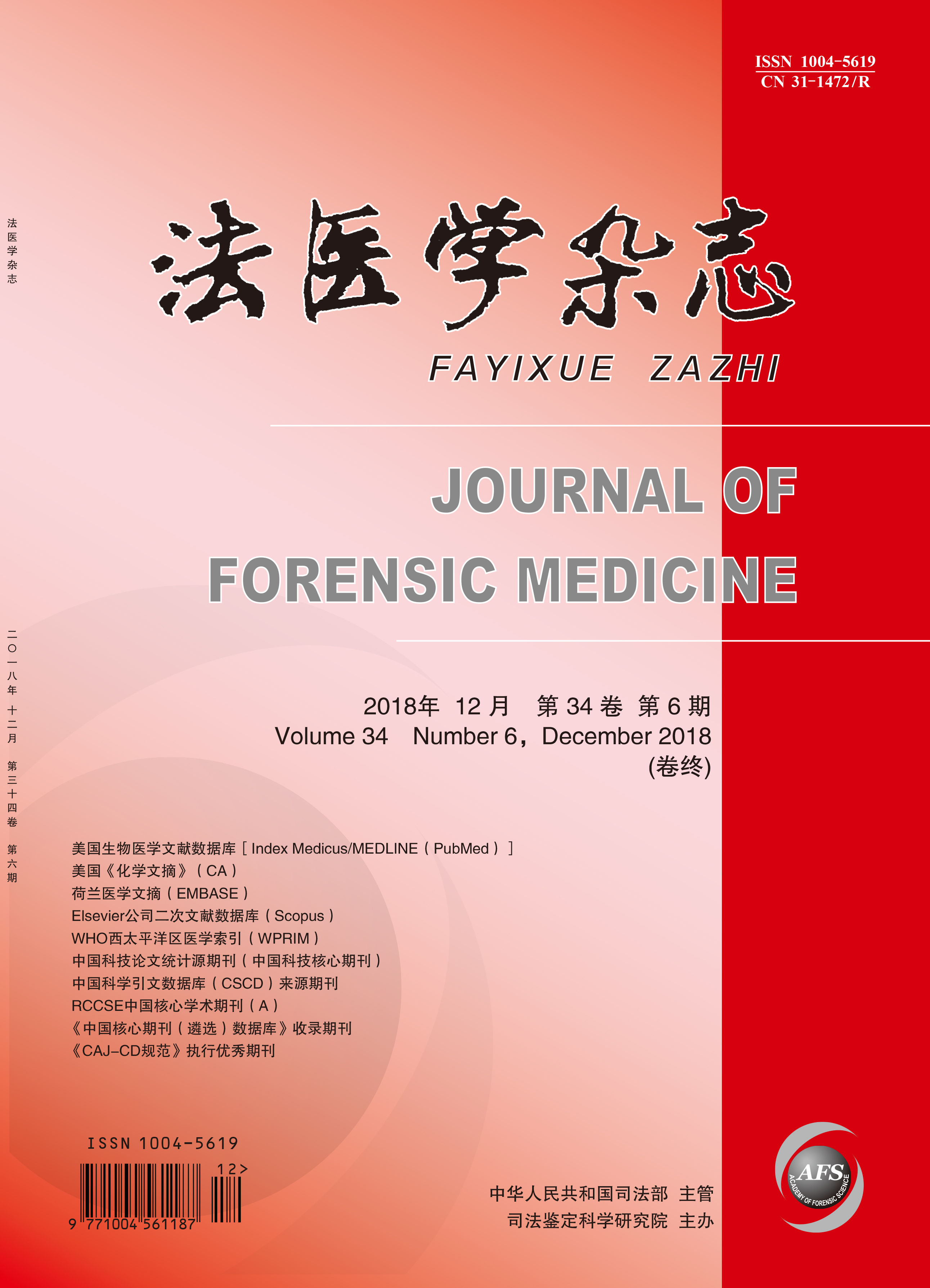|
|
Decomposition Kinetics of Omethoate in Blood
LI Peng, WANG Hao-yu, BI Wen-ji,et al.
2018, 34(6):
601-605,610.
DOI: 10.12116/j.issn.1004-5619.2018.06.005
Objective To study the decomposition kinetics of omethoate in blood. Methods The acetonitrile precipitated protein was added into the blood, with the chromatographic column of a Waters BEH C18 column (2.1 mm×50 mm, 1.7 μm), the mobile phase of 5 mmol/L ammonium acetate aqueous solution-methanol, and the gradient elution with a flow rate of 0.3 mL/min and injection volume of 2 μL. With electrospray ionization (ESI) source and positive ion detection, qualitative and quantitative analyses were taken using multi-reaction monitoring mode. Omethoate standard was added into blank human blood to the mass concentrations of 0.78, 1.40, 2.30, 4.50, and 7.20 μg/mL, and each mass concentration was preserved at 3 temperatures of -20 ℃, 4 ℃, and 20 ℃, respectively. The content of omethoate was detected at different time points (0, 1, 3, 4, 7, 11, 15, 24, 32, 40, 48, 64, 80, 96, and 120 d). Results Different concentrations of omethoate all showed a descended trend in human blood under different temperature conditions. The decomposition in storage environment of -20 ℃, 4 ℃, and 20 ℃ was fit to a one-compartment open model with a first-order kinetic process, which could be expressed as Ct=Coe-αt, with the calculated theoretical values of omethoate concentration close to the measured values. Conclusion All concentrations of omethoate are decomposed in the blood, which vary a lot in different preservation conditions. It is suggested that blood samples should be frozen and detected timely in suspected omethoate poisoning cases.
References |
Related Articles |
Metrics
|


